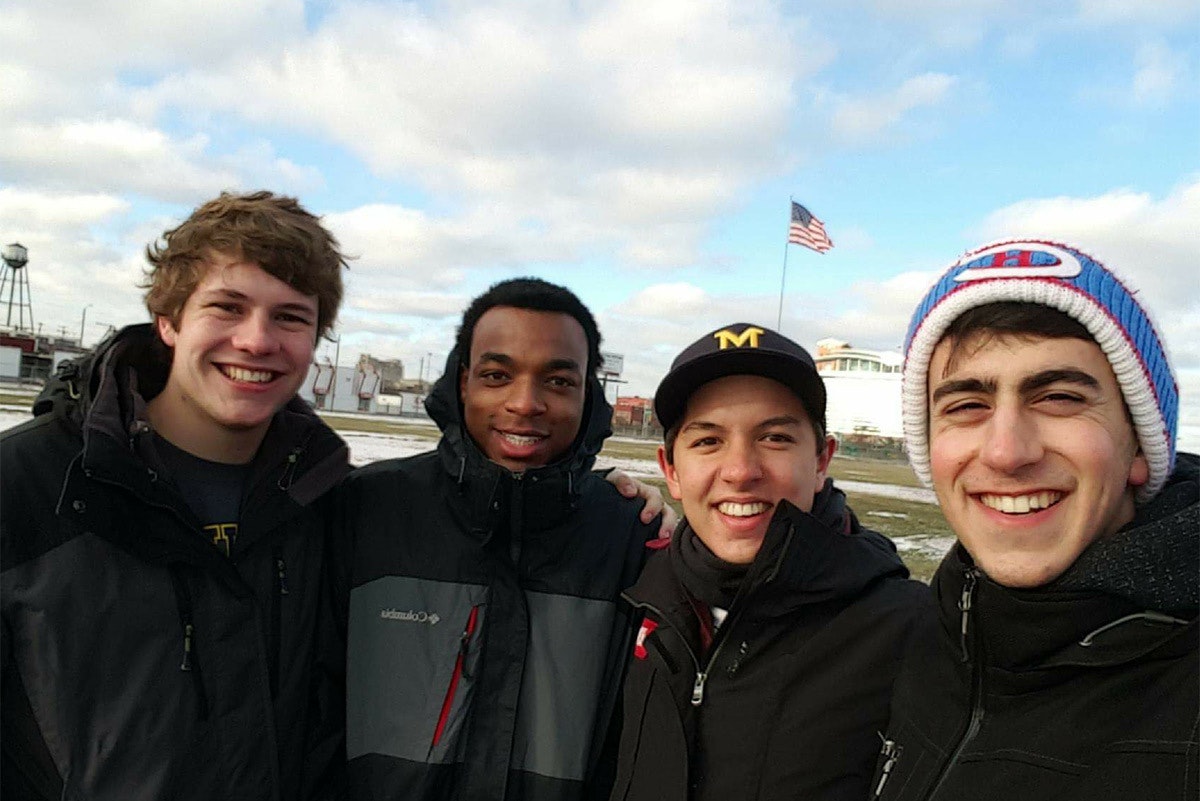DeVanté Coleman: Social Impact Challenge
The U-M Center for Social Impact's annual Social Impact Challenge brings undergraduate students from a wide variety of disciplines together to strategically address a real-life challenge currently facing a Detroit-based organization.
This year, Social Impact Challenge participants focused on a redevelopment campaign to transform the former home field of the Detroit Tigers into a youth sports center called “Kids at the Corner.” Organized by the Police Athletic League's (PAL), the center faces some challenging questions. How can the community best utilize the playfield? How will the site's history be preserved? What does a sustainable budgetary model look like for a project of this scale and scope?
For thoughts on these questions, we turn to Stamps student DeVanté Coleman (BFA ‘18). DeVanté's Social Impact Challenge team, “Detroit Tomorrow,” is a finalist in the 2016 Social Impact Challenge.

First off, how did you become involved in the Social Impact Challenge?
A couple of the members on our team are LSA students and heard about the challenge. They sent me an email about it and asked if I wanted to join their team. We all looked it over and thought it was cool so we decided to go for it. We're all good friends and floor mates with the exception of one member that lives in Baits II, so we were all down to work together. I personally am considering pursuing a business or entrepreneurship minor, so an opportunity to learn more about business was just what I needed.
What is your Social Impact Challenge project? Describe what you and your team are proposing for the Police Athletic League.
We wanted to approach fundraising and community involvement ideas with a large scope. Why not suggest an ice skating rink, adult leagues, or movie nights? Ideas as such reach out to the whole community rather than just one demographic. We also came up with other events to help bring revenue back into the community, such as PAL Alumni games and concerts during the summer.
How did your Stamps education feed your thought process and approach to the Social Impact Challenge? Were there any specific teachers / classes / projects that helped you bring your best to the table?
Art and Design as a whole is a constant critical thinking process. That being said, my mind is subconsciously practicing and preparing to answer questions and to come up with ideas. This might be a bit of a reach, but last semester in Art and Design in Context (ARTDES 150), we learned a lot about catharsis. The rebuilding of the old Detroit Tiger Stadium is a big deal for the Corktown community and beyond, mainly because the field has so much history. I feel like my team and I kept this, catharsis, in mind when coming up with ideas for history preservation, because in the end the final product is not only suppose to be fast functioning and aesthetically pleasing, but also moving.
What role can art & design play in the strategic planning of a community?
Art and Design is very broad, which means there are many ways it can play a role in strategic planning. From an aesthetic standpoint of designing, a lot of the art movements we study in class provide us with enough background knowledge to know what references work. Design/architecture is also a cornerstone when it comes to urban planning. Say we are building a mall. One will not just make a big box building and fill it with stores, but rather come up with ways to make the experience better for the consumer, and that where art and design is most effect: When it's all said and done, is the user satisfied?
The 2016 Social Impact Challenge Finals take place on Tuesday, February 9 at 5 pm in the Ross School of Business - 6th Floor Colloquium. Attend to see the finalist presentations and root for DeVanté and the “Detroit Tomorrow” team.